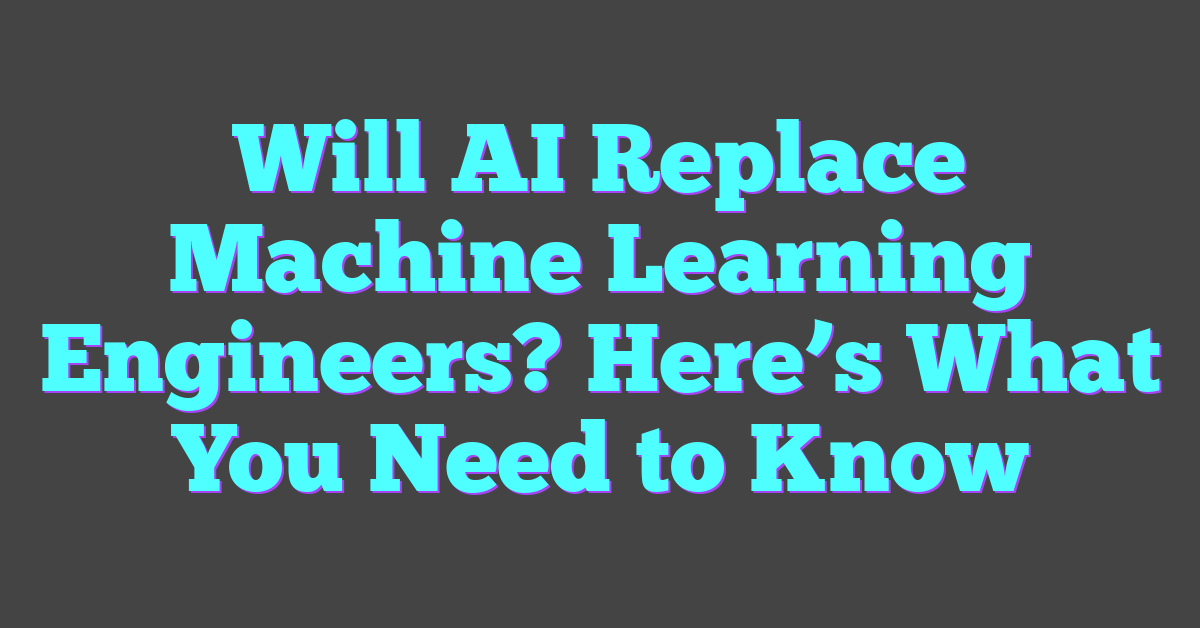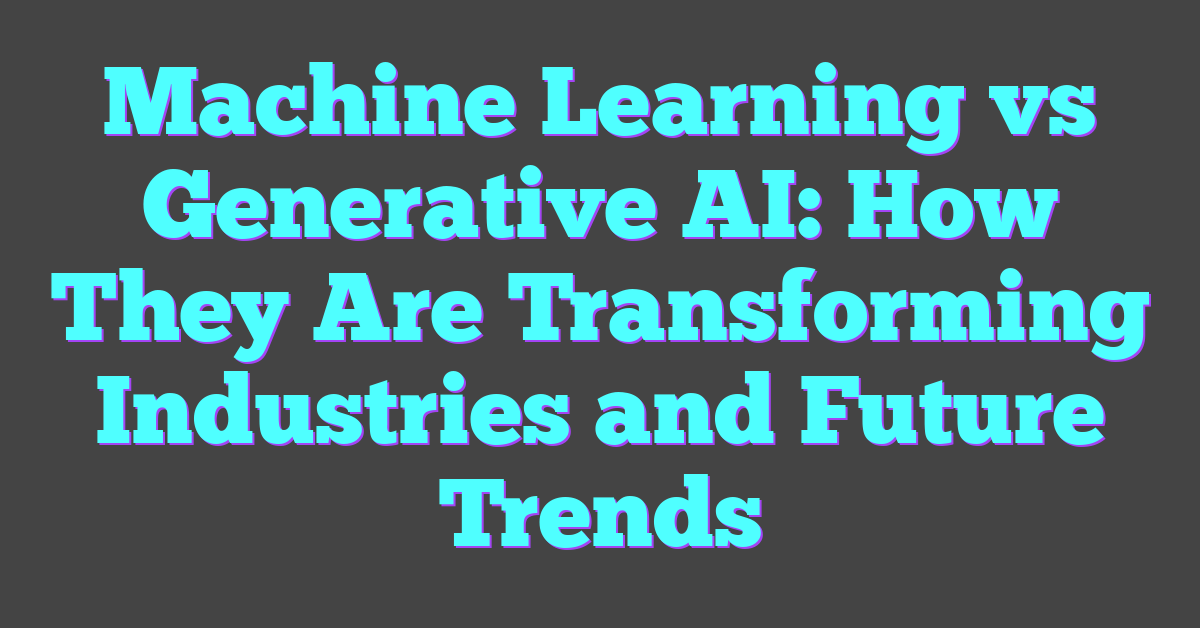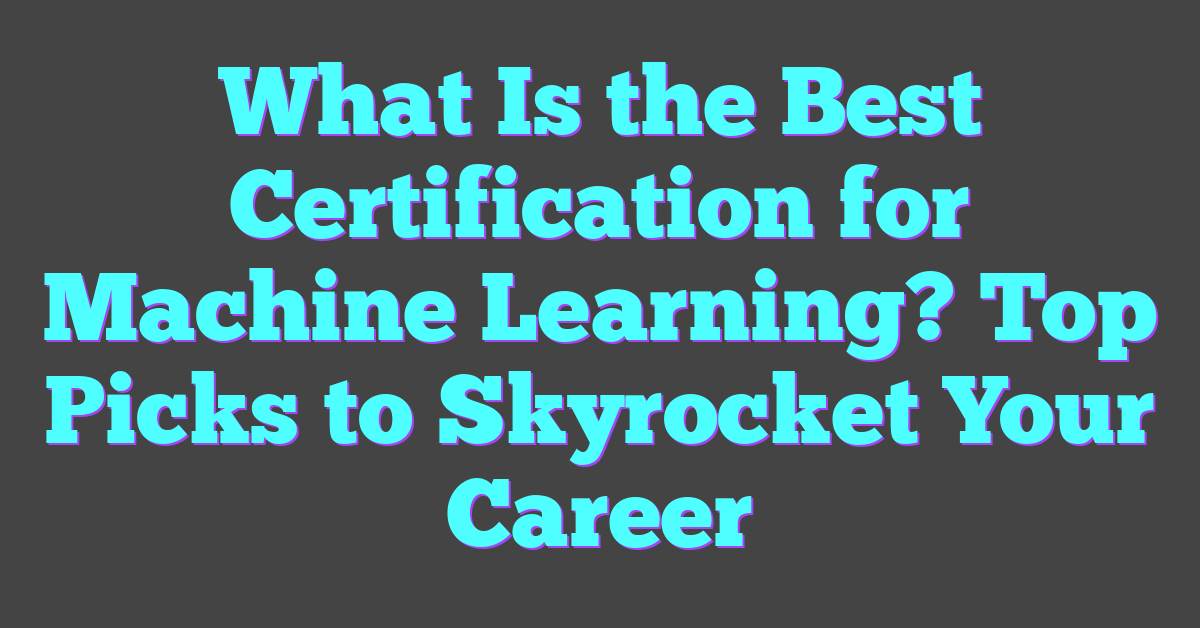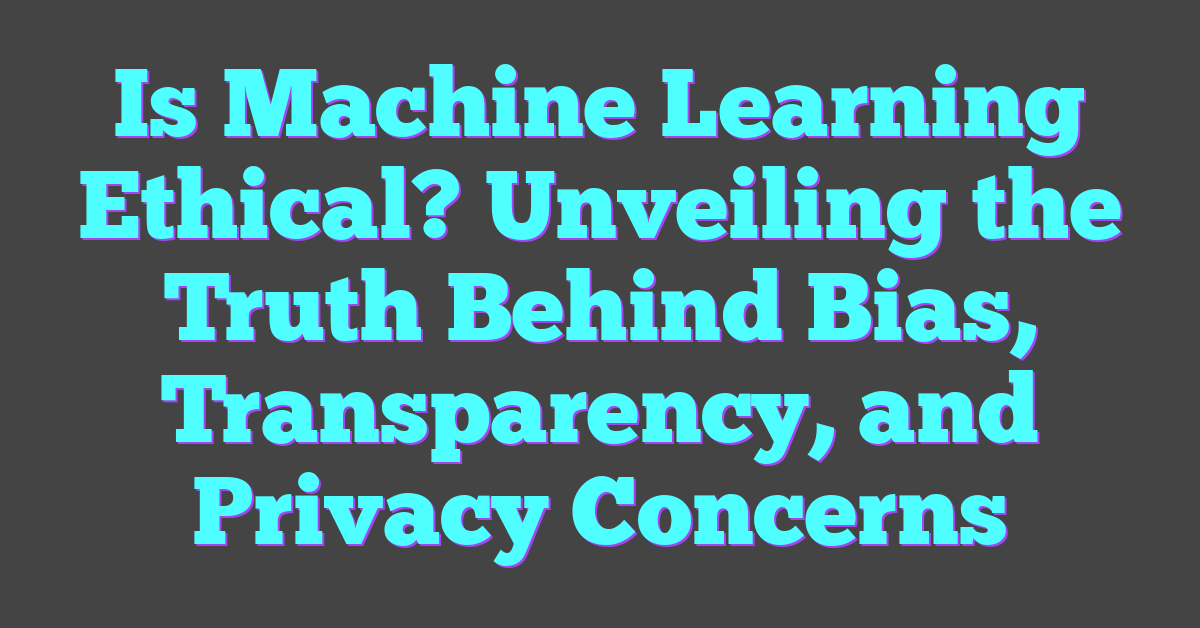In today’s fast-paced world, terms like machine learning, AI, and robotics pop up everywhere, from tech blogs to coffee shop conversations. But what exactly are they examples of? These cutting-edge technologies are revolutionizing industries, transforming how we live and work. They represent the forefront of innovation, blending computer science, engineering, and data analytics to create smarter, more efficient systems.
Machine learning and AI are all about creating intelligent systems that can learn and adapt without explicit programming. Robotics, on the other hand, focuses on building machines that can perform tasks autonomously. Together, they form the backbone of modern technological advancements, driving progress in fields like healthcare, transportation, and entertainment. Curious to know more? Let’s dive into the fascinating world of these groundbreaking technologies.
Exploring Machine Learning: Definitions and Applications
Machine learning (ML) stands out in today’s tech-savvy world. It involves teaching computers to recognize patterns and make decisions based on data.
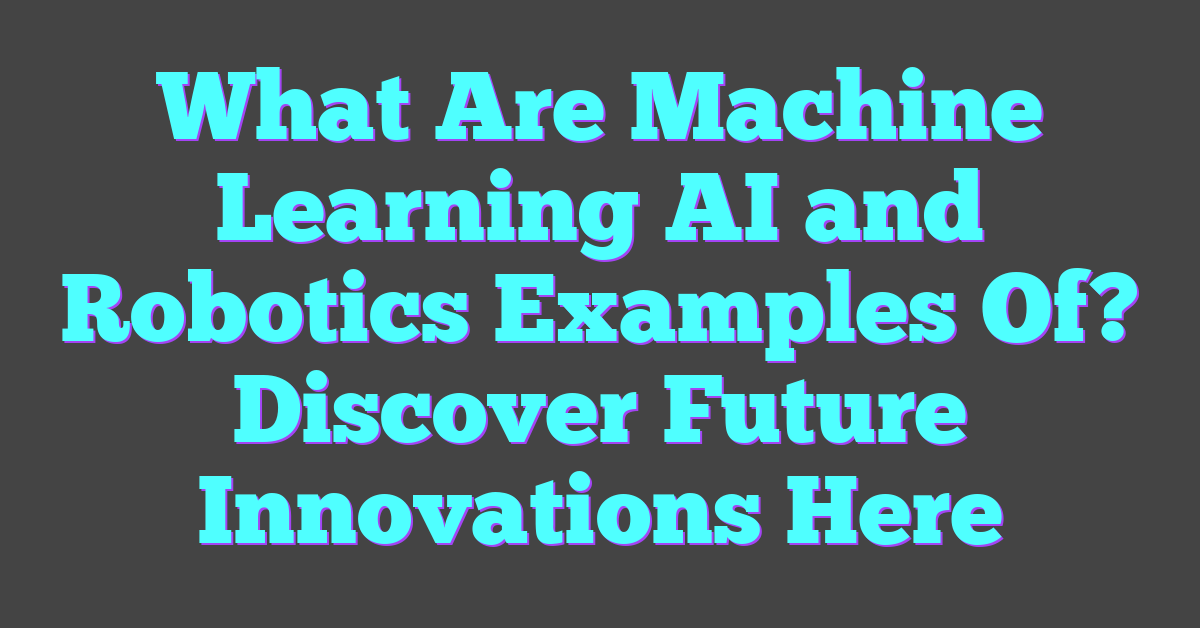
Key Concepts in Machine Artificial Intelligence
Machine learning involves several core concepts:
- Algorithms: Algorithms serve as the backbone of machine learning. Examples include decision trees, neural networks, and support vector machines.
- Data Sets: Large data sets power machine learning models. For instance, image databases for training vision systems.
- Training and Testing: Models need training data to learn and testing data to validate performance. For example, training with historical stock prices.
- Supervised and Unsupervised Learning: Supervised learning uses labeled data, while unsupervised learning identifies patterns without labels. Examples are classification tasks for supervised learning and clustering tasks for unsupervised learning.
- Reinforcement Learning: This approach teaches models to make decisions through trial and error. They’re rewarded for good actions and penalized for poor ones. Robotics frequently utilizes this concept.
Real-World Applications of Machine Learning
Machine learning applications impact various sectors:
- Healthcare: Predictive analytics and personalized treatment plans. For instance, detecting early signs of diseases through medical imaging.
- Finance: Fraud detection and algorithmic trading. Predicting stock market trends with historical data analysis.
- Transportation: Autonomous vehicles rely on ML algorithms. Example: Tesla’s self-driving cars.
- Marketing: Personalized recommendations and targeted advertising. Companies like Amazon suggest products based on user behavior.
- Entertainment: Content recommendations on platforms like Netflix and Spotify. These systems analyze viewing or listening histories.
Machine learning is a powerful tool transforming industries and daily life through intelligent data analysis and decision-making capabilities.
The Rise of Robotics: An Overview
Robotics has transformed from a futuristic concept to a tangible reality shaping multiple industries. Technological advancements in AI and machine learning have accelerated this rise, creating intelligent systems capable of performing complex tasks.
Types of Robotics Technologies
Robotic systems now encompass a diverse range of technologies:
- Industrial Robots: Used in manufacturing, these machines handle tasks like welding, assembly, and packaging with precision and speed.
- Service Robots: These robots assist in non-manufacturing tasks such as cleaning, delivery, and customer service, enhancing efficiency and user experience.
- Collaborative Robots (Cobots): Designed to work alongside humans, cobots enhance productivity by handling repetitive or hazardous tasks.
- Autonomous Mobile Robots (AMRs): Equipped with sensors and navigation systems, AMRs move within environments without human intervention, used in warehouses and delivery services.
- Humanoid Robots: Mimicking human appearance and behavior, these robots find applications in research, entertainment, and personal assistance.
Robotics in Healthcare, Manufacturing, and Beyond
Robotics has made significant strides in several sectors:
- Healthcare: Surgical robots, like the da Vinci Surgical System, enable minimally invasive surgeries with precision. Autonomous robots handle tasks such as medication dispensing and patient monitoring, enhancing care quality.
- Manufacturing: Robots streamline assembly lines, reduce production costs, and improve quality control. Examples include car manufacturing where robots weld, paint, and assemble parts.
- Agriculture: Drones and robotic harvesters enhance crop monitoring and yield prediction. Robots handle delicate tasks like picking fruits and vegetables, ensuring efficiency.
- Logistics: In warehousing, robots automate sorting, packing, and transportation tasks. Amazon’s fulfillment centers use robots to streamline order processing.
- Space Exploration: NASA’s rovers, like Curiosity and Perseverance, explore Mars, gathering data and conducting experiments remotely.
Robotics, driven by AI and machine learning, continuously evolves, opening new possibilities and transforming industries worldwide.
Intersection of AI and Robotics
AI and robotics integration drives significant advancements across multiple industries. Combining AI’s decision-making with robotic systems creates smarter, more efficient technological solutions.
How AI Enhances Robotic Capabilities
Machine learning algorithms optimize robotic performance by enabling real-time decision-making. For example, facial recognition in service robots enhances user interaction, and in agriculture, AI-driven robots identify and target pests precisely. Deep learning models improve navigation algorithms for autonomous mobile robots in logistics, ensuring efficient warehouse management. Reinforcement learning applied to humanoid robots allows adaptive learning in dynamic environments, crucial for space exploration and healthcare applications.
- Industrial Robots: These robots use AI for predictive maintenance in manufacturing, reducing downtime and increasing productivity.
- Collaborative Robots (Cobots): AI enables cobots to work safely alongside humans, enhancing efficiency in assembly lines and medical surgeries.
- Autonomous Mobile Robots (AMRs): AI algorithms guide AMRs in warehouses to optimize routes, manage inventory, and increase operational efficiency.
- Healthcare Robots: AI-driven diagnostics and treatment planning aid in precise surgeries and personalized patient care.
- Agricultural Robots: AI systems identify crop diseases and pests, delivering targeted treatment to maximize yield and reduce chemical usage.
Future Trends in Machine Learning and Robotics
Machine learning and robotics continue to evolve at a rapid pace, transforming numerous industries. These advancements promise to unlock new capabilities and efficiencies, making them a focal point of technological development.
Predictions for AI and Robotics Integration
The integration of AI and robotics is expected to deepen significantly. Predictive analytics will drive more intelligent automation in industries like manufacturing and logistics. Machines will self-optimize based on real-time data, enhancing productivity. For example, autonomous drones in agriculture can analyze soil health and crop conditions to execute precise interventions. In healthcare, AI-powered robots will increasingly assist in surgeries, providing surgeons with real-time data and precision.
Innovations to Watch in the Coming Years
Several innovations will shape the future of machine learning and robotics. Flexible automation, enabled by AI, allows robots to adapt to different tasks on the fly. This is particularly useful in manufacturing, where product lines frequently change. Edge AI, which processes data locally on devices, is another key innovation. It reduces latency and increases security, making it ideal for applications like autonomous vehicles and smart home devices. Additionally, human-robot collaboration will reach new heights with advancements in natural language processing and machine learning, making interactions more intuitive and efficient.
Conclusion
Machine learning AI and robotics are transforming industries in remarkable ways. From smarter manufacturing processes to innovative healthcare solutions they’re driving efficiency and productivity to new heights. The future holds even more exciting developments like adaptive robots and enhanced human-robot collaboration. As these technologies continue to evolve they’ll undoubtedly unlock new possibilities and reshape the global landscape. Embracing these advancements not only propels industries forward but also opens doors to a more efficient and innovative future.
Frequently Asked Questions
What is the impact of machine learning and robotics on manufacturing?
The integration of machine learning and robotics in manufacturing is driving increased efficiency and smarter automation. Predictive analytics and real-time data optimization are helping to streamline processes, reduce downtime, and enhance overall productivity.
How are AI and robotics transforming the healthcare industry?
AI-powered robots and machine learning are revolutionizing healthcare by providing advanced diagnostics, personalized treatment plans, and efficient patient management. These technologies improve accuracy, reduce human error, and enable more precise and effective care.
What role do autonomous drones play in agriculture?
Autonomous drones in agriculture are used for tasks like crop monitoring, precision spraying, and soil analysis. They help optimize resources, increase yield, and reduce labor costs, making farming more efficient and sustainable.
What is Edge AI, and how does it benefit robotics?
Edge AI involves processing data locally on devices rather than in a centralized cloud. This reduces latency, enhances security, and allows for faster decision-making. In robotics, Edge AI enables real-time responses and improved performance.
How are machine learning and robotics affecting the logistics sector?
In logistics, the combination of machine learning and robotics enhances supply chain efficiency through predictive maintenance, real-time tracking, and automated warehousing. These advancements reduce costs, improve accuracy, and speed up delivery times.
What are flexible automation and adaptive robots?
Flexible automation refers to systems that can be easily reconfigured to handle different tasks. Adaptive robots are designed to learn from their environment and can be quickly repurposed for various applications, offering greater versatility in automation.
How does natural language processing enhance human-robot collaboration?
Natural language processing (NLP) improves communication between humans and robots by allowing machines to understand and respond to human language. This facilitates smoother interactions, making robots more intuitive and user-friendly.
What future innovations are expected in machine learning and robotics?
Future innovations include more sophisticated adaptive robots, the widespread adoption of Edge AI, and advancements in human-robot collaboration through improved NLP and machine learning algorithms. These developments will continue to enhance automation and efficiency across industries.
How is real-time data optimization utilized in robotics?
Real-time data optimization involves gathering and analyzing data instantly to make informed decisions on the fly. In robotics, this helps in adjusting operations in real-time, leading to increased accuracy, efficiency, and responsiveness in various applications.
Why is the integration of AI and robotics important for global industries?
The integration of AI and robotics is crucial for global industries as it drives innovation, enhances productivity, and opens up new possibilities. By automating complex tasks and optimizing processes, these technologies enable companies to stay competitive and meet evolving market demands.

